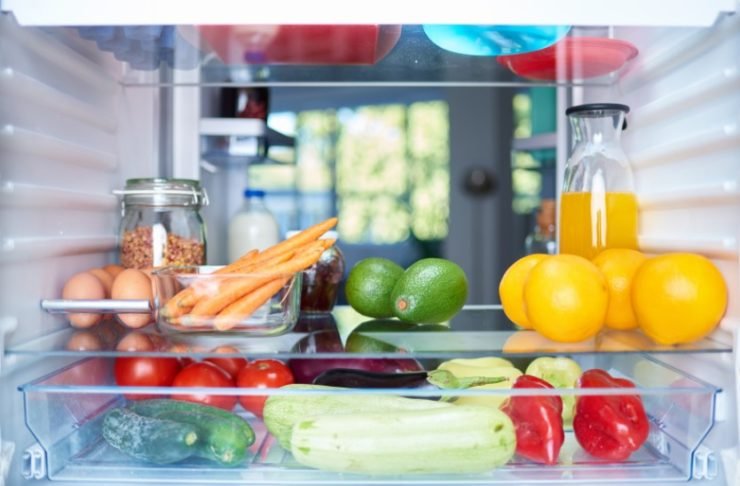I never really thought about FIFO until I went to culinary school and started working in professional kitchens. Now, after over a decade of doing it every day for a living, it’s become second nature at home.
FIFO is important in restaurant kitchens because it reduces waste and ultimately saves money. Learning how to FIFO your kitchen is also a great way to get organized and get the most out of the ingredients you buy. And, it will make cooking easier and more enjoyable.
By following these few simple steps, you’ll be able to quickly incorporate FIFO into your life, transforming your kitchen and the way you cook.
In This Article
What Is FIFO And Where Does It Come From?
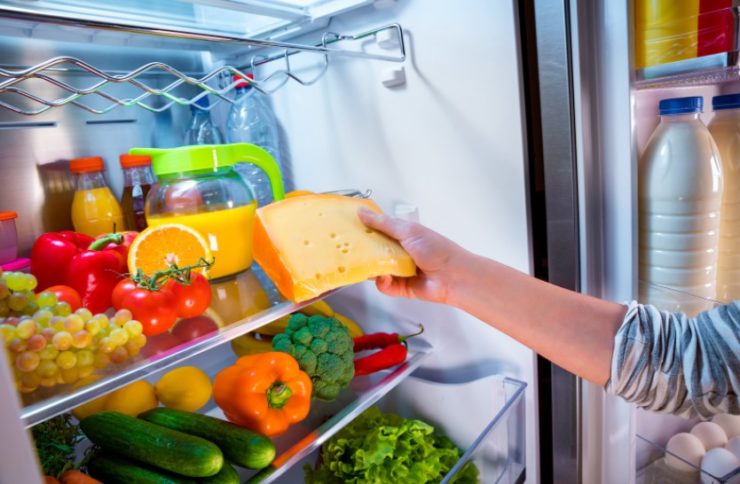
FIFO is an indispensable tool used in any type of food-related business like restaurants and grocery stores. It stands for “First In, First Out,” and simply means that you use old products first before opening or buying new ones.
It’s a simple way of keeping track of food so that you use the oldest items first. This is one of the best ways to minimize food waste, accurately stock your kitchen, and keep things organized.
Whether you’re dealing with canned food that has a long shelf life or produce and meat that will only last a few days. Using FIFO helps ensure food gets used or sold before it ends up in the trash. Saving time and money.
4 Simple Steps To FIFO Your Kitchen
Embracing FIFO in your home will help you get organized, reduce wasted food, and make shopping and meal planning a breeze.
Depending on the state of your kitchen, your FIFO maiden voyage could take a little time and effort. But, if you stick with it, it will quickly become a habit that you don’t even think about.
If you follow a few simple steps, you’ll have a fridge and pantry where you can see all of your ingredients, which makes them easier and more likely to get used. And, you’ll always know what’s on hand, making meal planning, cooking, and shopping easier than ever.
1. Take Inventory
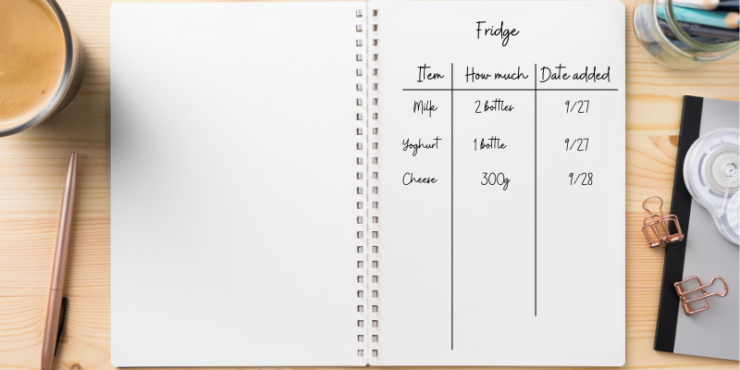
I’ll be honest, taking inventory in a restaurant was always one of my least favorite tasks. It was time-consuming and tedious, plus I would always rather be cooking than counting.
At home though, it’s fast and painless (most of the time). And, you should really only have to do it once, as long as you stick to FIFO.
All you need to do for this step is take stock of all the ingredients in your kitchen. If your pantry hasn’t gotten too far out of control, this can simply be a mental list. But, if you have A LOT of stuff, you may want to write everything down.
This is the perfect opportunity to throw out any really old ingredients or give away anything that you know in your heart you’re just never going to use.
Taking your first inventory is also a good way to take note of any areas or bad habits that might take a little work to break.
For me, that was buying a new bag of dried pasta every time I’m at the store. Leaving me with several partially used packages of various shapes and types of pasta. This is a big no-no in the FIFO world.
Or, you may find that you have 5 open containers of mustard or 3 bell peppers from 3 different shopping trips. All things that lead to food clutter and waste. But not for long!
2. Label Your Containers
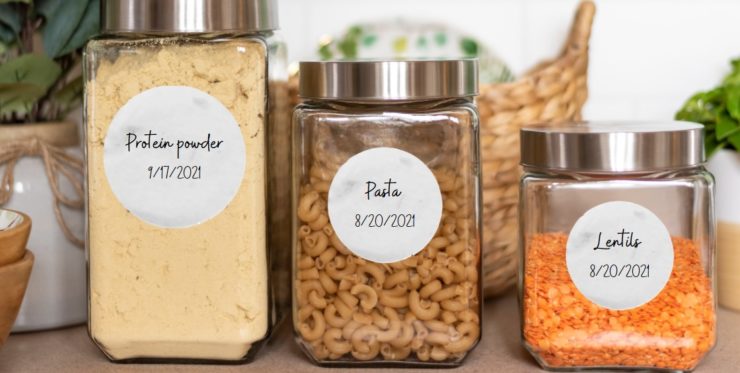
After, or better yet while you’re doing your initial inventory, start putting things into containers and labeling them. You should be able to easily see what the item is and how long it’s been there.
Even when it comes to dry goods with an indefinite shelf life, a date is important. That way if you notice some dry beans that have been living in the pantry for years, it’s probably time to use them and maybe remove them from the grocery list.
In one of the more strict kitchens that I worked there were very, let’s say “firm” labeling policies. It went, name of item at the top center, date on the bottom left, and cooks initials on the bottom right.
If items were labeled incorrectly, your mise en place was either thrown out or used for a family meal. Oh, and labels had to be neatly cut with scissors or a knife or they would fall to the same fate.
Now that’s pretty extreme, but I will say it was effective, as I still label containers at my house, in the same way, initials and all.
Another reason this is important in a restaurant is that you can quickly see when an item needs to be used quickly or thrown out altogether.
When it comes to the containers you use, I almost exclusively use inexpensive restaurant delis. A professional kitchen habit, that’s a game-changer at home. They come in three different sizes, but they all use the same lid (very important for the next step), plus they stack neatly and take up almost no space.
For larger items like flours, sugar, and grains I love using plastic Cambro containers. They come in several sizes, will last forever, and can be easily stacked and organized. This is another container that you’ll find in just about any pro kitchen that you step foot in. They really have efficient food storage down to a science.
3. Consolidate Ingredients
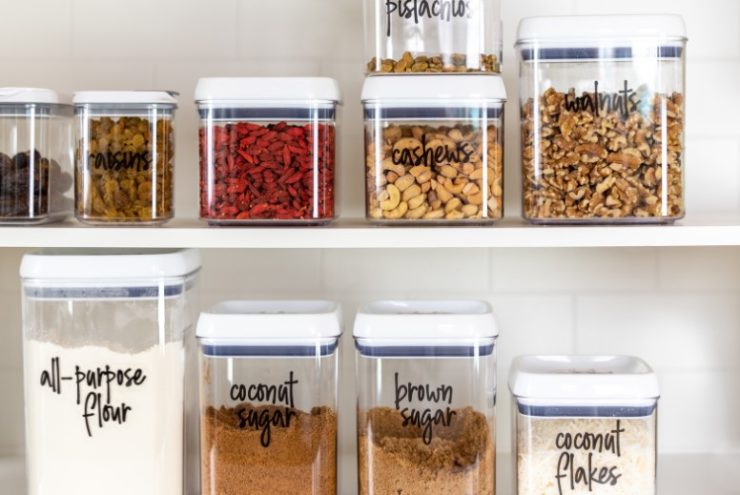
Consolidation is all about making creating more space so that ingredients are easier to see and use. Plus, it frees up room for your next shopping day and makes organization easy.
You’ve probably heard the phrase “out of sight, out of mind”. It’s a saying that seems like it was created in a kitchen, but we often say “if you can’t see, you won’t use it”. And large bulky containers end up hiding ingredients behind them, so they get forgotten until it’s too late.
So, anytime you can put food into a smaller container, do it. That’s consolidation in a nutshell, and it’s why those cheap deli containers are so useful. You can easily transfer food from the large quart size container, down to the pint, and then the cup size, all using the same lid and same label.
Consolidating is also a great way to keep up with your mental inventory. Plus, you’ll physically see when you’re low on something that might need to be replaced soon.
Now, this does create a few more dishes here and there, but I think it’s worth it for the space you create and how neat and tidy your fridge will look. Just remember to keep tall items in the back and short ones in the front, just we did in school pictures growing up.
When it comes to storage locations, there are also a couple of places I try to avoid as much as possible.
Shelves that are too high to see are off-limits for food. And cupboards that are so deep that light doesn’t reach the back might as well be black holes in space. Those are two places where canned goods go to die.
4. FIFO Is A Team Sport

There’s no point going through all this work if someone else in the house is going to open the second jar of peanut butter every time they want some or put empty cartons of milk back in the fridge. So get everyone on board.
This is arguably the hardest step in the whole process. But if you can get everyone on board, everyone will benefit from a well-stocked and organized kitchen that’s a joy to cook in.
And if restaurants full of ragtag cooks can come together and do it, I’m sure you can too.
FIFO Is All About Persistence
FIFO is all about persistence. The initial inventory and purge of your fridge and pantry is where most of the hard work comes in. But, once you’ve got your FIFO system down, it should be easy to maintain.
Just remember to keep a roll of tape and a sharpy at the ready for labeling. And always take an extra second to scan the fridge before you open a new jar of this or package of that to make sure there isn’t one already in use.
Meal planning and FIFO go hand in hand, and it can be a great help when it comes to using up older ingredients to make way for new ones. To see how the two work together, and to get started yourself, check out our beginners guide to meal planning.
